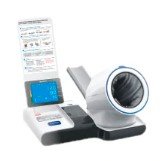Regulations and Considerations for Telehealth Phlebotomy Services in the United States
Summary
- Telehealth Regulations for phlebotomy services vary by state in the United States.
- Maintaining patient privacy and confidentiality is a priority in telepharmacy services.
- Some states have specific guidelines for the supervision of phlebotomy services provided through telehealth.
Introduction
With the advancement of technology, telehealth has become increasingly popular in the medical field. Phlebotomy services, in particular, have started to incorporate telehealth practices to improve access to care and streamline processes. However, there are specific Regulations and restrictions regarding the use of telehealth in phlebotomy services across different states in the United States.
Regulations and Restrictions by State
California
In California, telepharmacy services must be conducted in compliance with all state and federal laws, including the Health Insurance Portability and Accountability Act (HIPAA) Regulations. Phlebotomy services provided through telehealth must adhere to the same standards as in-person services.
Texas
In Texas, telepharmacy services are allowed as long as the patient's privacy and confidentiality are maintained. Phlebotomy services conducted through telehealth must be securely transmitted and stored to protect patient information.
New York
New York has specific guidelines for the supervision of phlebotomy services provided through telehealth. A licensed healthcare provider must oversee the phlebotomy procedures remotely to ensure patient safety and quality of care.
Challenges and Considerations
While telehealth offers numerous benefits for phlebotomy services, there are also challenges and considerations that need to be addressed:
- Regulatory Compliance: Healthcare Providers must ensure they are following all state and federal Regulations when providing phlebotomy services through telehealth.
- Technical Issues: Connectivity problems or system failures can impact the quality of telepharmacy services and patient care.
- Training and Education: Healthcare Providers need to be properly trained in telehealth practices to deliver phlebotomy services effectively and safely.
Conclusion
Telehealth is transforming the way phlebotomy services are delivered in the United States. While there are specific Regulations and restrictions regarding the use of telehealth in phlebotomy services across different states, Healthcare Providers must prioritize patient privacy, compliance with Regulations, and quality of care when implementing telepharmacy practices.

Disclaimer: The content provided on this blog is for informational purposes only, reflecting the personal opinions and insights of the author(s) on the topics. The information provided should not be used for diagnosing or treating a health problem or disease, and those seeking personal medical advice should consult with a licensed physician. Always seek the advice of your doctor or other qualified health provider regarding a medical condition. Never disregard professional medical advice or delay in seeking it because of something you have read on this website. If you think you may have a medical emergency, call 911 or go to the nearest emergency room immediately. No physician-patient relationship is created by this web site or its use. No contributors to this web site make any representations, express or implied, with respect to the information provided herein or to its use. While we strive to share accurate and up-to-date information, we cannot guarantee the completeness, reliability, or accuracy of the content. The blog may also include links to external websites and resources for the convenience of our readers. Please note that linking to other sites does not imply endorsement of their content, practices, or services by us. Readers should use their discretion and judgment while exploring any external links and resources mentioned on this blog.
